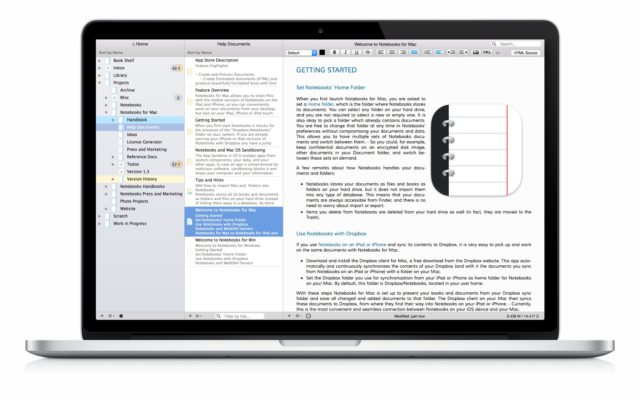Apple Headed Toward Another Record-breaking Quarter For Mac
This afternoon, Apple announced their earnings for the second quarter of their 2018 fiscal year, and the company has set a new revenue record for the quarter with $61.1 billion in revenue. Apple had a gross margin of 38.3% for the quarter, down slightly from the 38.9% margin a year ago. Operating income for the quarter was up 12.7% to $15.9 billion, and net income was up 25% to $13.8 billion. Earnings per share came in at $2.73, up 30% from a year ago. Apple Q2 2018 Financial Results (GAAP) Q2'2018 Q1'2018 Q2'2017 Revenue (in Billions USD) $61.137 $88.293 $52.896 Gross Margin (in Billions USD) $23.422 $33.912 $20.591 Operating Income (in Billions USD) $15.894 $26.274 $14.097 Net Income (in Billions USD) $13.822 $20.065 $11.029 Margins 38.3% 38.4% 38.9% Earnings per Share (in USD) $2.73 $3.92 $2.10 As always with Apple, the bulk of their revenue came from the iPhone, which pulled in $38.0 billion this quarter on sales of 52.2 million devices.
Apple doesn’t break down which phones were sold, but Tim Cook did say “Customers chose iPhone X more than any other iPhone each week in the March quarter” and that’s clear from the revenue, which was up 14% from last year, on only 3% unit sales increase, so the average selling price for iPhone is now $728.34. IPad had a small gain in sales this quarter as well, with 9.1 million devices sold, which is up 2% from a year ago. Revenue for iPad was $4.1 billion, which was up 6%, so like iPhone, Apple is earning more per device sold than previously. Mac sales slumped, down 3% from a year ago to 4.1 million Macs sold, but thanks to higher revenue per device for Mac as well, the revenue was flat compared to last year. While iPad and Mac were once the other horses in the Apple stable, they’ve been eclipsed by Apple’s services, which includes digital content, AppleCare, Apple Pay, and other services. Apple had revenues of $9.2 billion for this quarter on services alone, which is growth of 31% from last year. Unlike their other products, the services also didn’t dip from the Christmas quarter either, with sequential growth of 8% compared to Q1 2018.
Apple Q2 2018 Device Sales (thousands) Q2'2018 Q1'2018 Q'2017 Seq Change Year/Year Change iPhone 52,217 77,316 50,763 -38% +3% iPad 9,113 13,170 8,922 -31% +2% Mac 4,078 5,112 4,199 -20% -3% Apple’s Other Products, which includes AirPods, Apple TV, Apple Watch, Beats, iPod, and accessories, also continues to have strong growth, with $3.9 billion in revenue for the quarter, which is up 38% from a year ago. Despite concerns about iPhone X sales by analysts, Apple has yet again set the bar on how to print money. And, they’ve done it with the iPhone only being 62% of their revenue for this quarter.
It’s been well over 70-75% in the past. At the growth rate of services, it’s close to the combined revenue of the iPad and the Mac. Apple has also announced a further $100 billion in shares will be repurchased, and they are raising the dividend 16%. For the third quarter, they are projecting revenue between 51.5 and 53.5 billion, with margins between 38 and 38.5%. Wednesday, May 02, 2018 - I can't believe they sold 52 million iPhones when.let's be honest here.the iPhone 8 is literally an iPhone 7 with wireless charging and a faster SoC, and the iPhone X has pretty mixed customer satisfaction.

It's pretty obvious Apple timed this very well to nab the iPhone 6 users looking to upgrade from their 3 year old clunkers. I would imagine anybody upgrading from a 6S would be disappointed to lose their headphone jack at the expense of negligible performance increase, and iPhone 7 users upgrading to the 8 would likely have a hard time even noticing they upgraded at all. The other astonishing thing is BatteryGate doesn't seem to have affected them at all, reputationally or financially. Thursday, May 03, 2018 - Apple’s SoC is more efficient than those from Qualcomm, and particularly Samsung. You can try to make things up, but it’s still false. The problem, which android makers have too, is that old batteries can’t power a sudden high usage rate, and so the phone stumbles. Apple attempted to mitigate that by slowing the phone when those heavy usage calls were made, and that’s about it.
Read about this, and you’ll understand. What does it mean that a battery is ok? It means that it can take a charge and has some minimum amount of storage available. It doesn’t mean that an old one is adequate for for intensive gaming.
All of the batteries in this problem area are older ones that have lost the ability to take a full charge. It’s not all of the batteries in the older phones either, just some.
It's going to be very interesting to see Apple spin these financials results. The company its Q1 2016 results, and the company posted recored quarterly revenue and profit of $75.9 billion and $18.4 billion, respectively. That sounds great until you realize that the has come true.

Apple Headed Toward Another Record-breaking Quarter For Mac S
Apple sold 74.8 million iPhones in its first full quarter of iPhone 6S and 6S Plus availability - up a meager 0.4 percent. As such, the company is forecasting revenue for the next quarter to land between $50-53 billion, a number that would mark a year-over-year decline in revenue for the first time since 2009. The bad news continues when looking at the iPad - Apple moved 16.1 million tablets in the quarter, down 25 percent over a year ago. It looks like the iPad Pro isn't the savior the company was looking for.
Mac sales declined slightly as well, down 4 percent to 5.3 million units in the quarter. While none of Apple's main product lines had the growth we've come accustomed to seeing, there were a few additional bright spots in the company's financials (beyond that record-breaking revenue and profit, of course). Apple's recently-created 'other products' category, which includes the Apple TV, Apple Watch, and the iPod, had the biggest quarter in terms of revenue since the company started reporting data in this fashion. Revenue of $4.4 billion in the 'other products' category was up significantly quarter-over-quarter (44 percent) and year-over-year (63 percent).

Of course, a year ago this category didn't have an Apple Watch or a new Apple TV to buoy it, but still it seems both products likely were popular holiday gifts for the company. It's also worth noting that Apple's 'services' category also jumped up significantly this quarter - revenues of $6.1 billion are up 20 percent quarter-over-quarter and 27 percent year-over-year. It's probable that people are buying more apps than ever for their iOS devices, spending cash on downloads for those new Apple TVs, and perhaps even subscribing to Apple Music. Apple also pointed out that it now has over 1 billion active devices across all its product categories, including the Mac, iPad, iPhone, iPod touch, Apple TV and Apple Watch. Those devices have 'engaged with Apple's services' at some point during the last 90 days.
CFO Luca Maestri said that was up over 25 percent compared to a year ago. As to why the overall results for Apple were weaker than they've been in recent quarter, Cook started today's conference call with lots of details about weakness in the foreign economy. About two-thirds of Apple's business comes outside the US at this point, and he noted that currencies are weakening in countries all across the globe. That slowdown, in addition to some economic 'softness' Apple saw in China, led to very small increases in revenue and profit compared to a year ago. Cook also admitted that iPhone sales will not, in all likelihood, continue their trend of year-over-year growth when the company next reports its financial results. Despite these challenges, Cook pointed to huge Apple customer satisfaction and the growing increase in its services business as reasons for Apple to continue having a steady revenue stream. If Apple can keep customers happy, the thinking goes, they'll keep buying Apple products and spending money in the App Store, on iTunes and elsewhere across Apple's portfolio.
And 1 billion activated devices means there's a lot of room for that services revenue to keep growing. Despite the record revenue, Apple's going to be in uncharted waters come next quarter.
The iPhone has been the company's biggest revenue source by far for a long time now, so investors likely won't be happy about its unprecedented streak of growth ending. The company is obviously in no immediate danger - but next quarter's earnings results might be the first in a long time that the company can't call 'record breaking.' Image credit: Sefa Karacan/Anadolu Agency/Getty Images.
